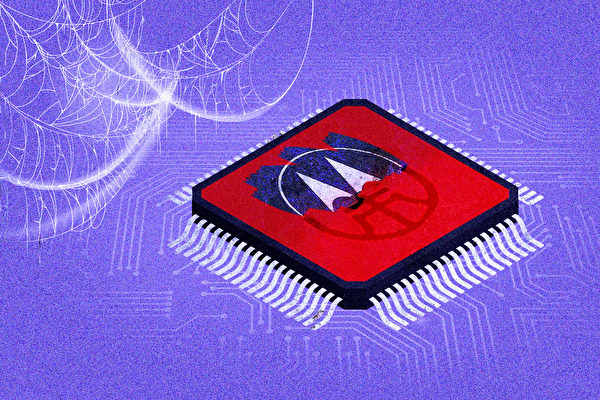In the context of the US upgrading its control over Chinese semiconductor and artificial intelligence (AI) industry technologies, the Chinese Communist Party (CCP) recently established the largest semiconductor investment fund in history. However, experts analyze that there are six major reasons indicating that the CCP’s fundraising of billions of dollars to support the semiconductor industry is not very effective.
According to the CCP’s National Enterprise Credit Information Publicity System, the China Integrated Circuit Industry Investment Fund (referred to as the National Fund) Phase III was officially established on May 24 with a registered capital of 344 billion RMB, making it the largest of the three national funds initiated by the CCP.
Data from “Tianyancha” shows that the Phase III fund is collectively held by 19 shareholders. The CCP’s Ministry of Finance is the largest shareholder, holding 17% with a paid-up capital of 60 billion RMB. The National Development Bank Capital Company is the second-largest shareholder, holding 10.5%. Five CCP state-owned banks were listed as investors for the first time, each contributing around 6%.
Professor Lin Zongnan from the Department of Electrical Engineering at National Taiwan University told Epoch Times, “This (Phase III Fund) won’t be successful because success in the semiconductor industry isn’t solely dependent on pouring in large sums of money.”
“So we expect that the CCP’s Phase III Fund will still not achieve the original planned effectiveness because it lacks the necessary environment for semiconductor production, leading to wastage of resources,” he said.
Rong-Wei Lai, Executive Director of the Taiwan Aspiration Association (ITA), stated, “How much capital does your country have to spend on building a wafer fab? Even after constructing a wafer fab, it doesn’t mean having good equipment or the ability to produce actual chips.”
He explained that manufacturing chips requires a high threshold, with hundreds of processes to go through, clean and moisture-resistant production environments, emphasizing the importance of proper facilities and practices for successful chip production.
Regarding the challenges facing the success of the CCP’s National Fund Phase III, Lai highlighted political leadership as a major issue.
He pointed out that the CCP consolidates political control over everything, and those in charge of these hefty funds and enterprises lack expertise, economic awareness, and market models. Everything is based on political appointments and loyalty rather than market orientation, reflecting a fundamental flaw in decision-making driven by political considerations rather than market dynamics.
The authorized representative and chairman of the Phase III Fund is Zhang Xin. Public information indicates that Zhang is a non-technical official who previously held roles such as Deputy Director of the Cybersecurity Administration of the Ministry of Industry and Information Technology, Director of the Electronic Department of the Ministry of Industry and Information Technology, and Senior Inspector of the Planning Department of the Ministry of Industry and Information Technology.
Regarding the issue of having such individuals lead the semiconductor industry, Lai criticized the party-state system, highlighting the inherent issues of decision-making based on political perspectives rather than economic or industry expertise.
Since the establishment of the National Fund, a significant amount of investment has been directed toward the integrated circuit industry to support the rapid development and indigenous innovation of China’s semiconductor sector. Phase III of the Fund focuses on investing in areas such as High Bandwidth Memory (HBM) and high-value-added Dynamic Random Access Memory (DRAM).
Lai pointed out that Beijing’s investment of billions in supporting the semiconductor industry is ultimately aimed at ensuring political stability rather than economic development. He emphasized that these industries are helpful for military and political power and pointed out that the ultimate purpose is to maintain their own political regime’s stability by developing essential industries.
He mentioned that the massive investment in high-tech industries by the government might be utilized for international conflict or even surveillance within the country to prevent discontent, indicating a broader political agenda behind such investments.
In response to the significant investments made by the CCP in the semiconductor industry, the US, Japan, and South Korea have taken supportive measures. President Biden signed the “2022 Chip and Tech Act” in August 2022, including subsidies of $52.7 billion for the chip industry and a 25% investment tax credit for semiconductor and equipment manufacturing to boost domestic chip production.
Moreover, President Yoon Suk-yeol announced a record-breaking 260 trillion Korean won plan to support the country’s semiconductor industry. Japan has allocated roughly 3.9 trillion yen in support over the past three years, while Taiwan proposed the “Chip-driven Taiwan Industry Innovation Plan,” planning to invest NT$300 billion over the next ten years.
Professor Lin expressed that in the past, Western countries relied on China for manufacturing but now have recognized the strategic importance of chip production, leading them to invest heavily to play pivotal roles in the free world’s manufacturing scene, focusing on retaining technological dominance.
Lai mentioned that the semiconductor industry is a product of globalized division of labor and that it is nearly impossible for China to achieve a sudden overtaking since it is a result of decades of evolution and specialization based on respective advantages and responsibilities across countries globally.
Even before the launch of Phase III of the National Fund, the sanctioned Huawei was found still using high-end chips secretly. In January 2024, Huawei introduced the Qingyun L540 laptop containing 5nm chips, revealing a reliance on chips produced by TSMC in 2020, showcasing the challenges of achieving technological independence.

